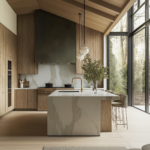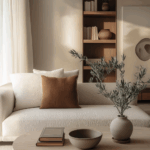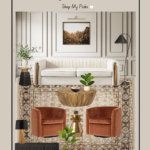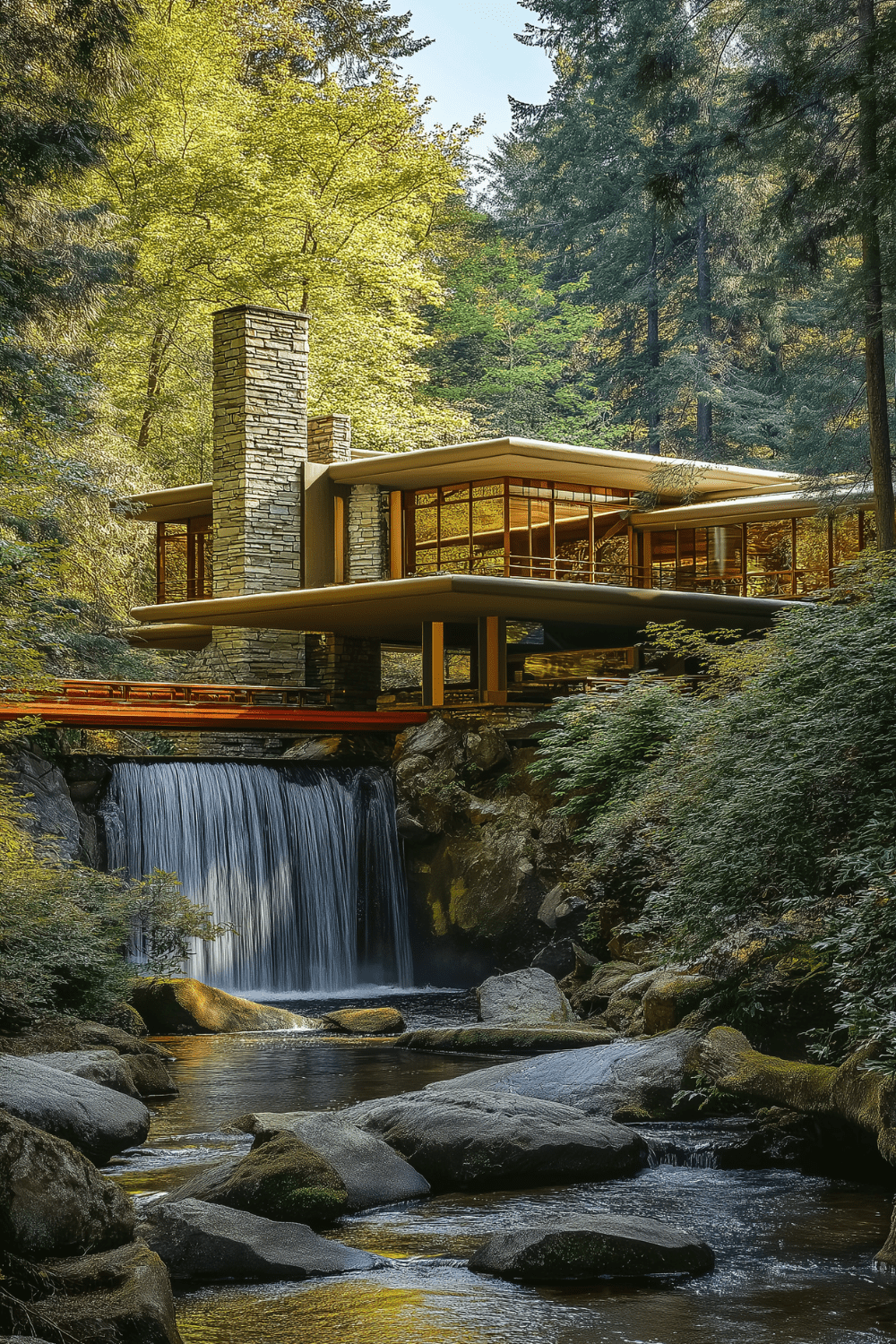
Nature as Blueprint: The Enduring Beauty of Organic Architecture
When architect Frank Lloyd Wright introduced the world to Organic Architecture, he wasn’t just offering a design style; he was sharing a philosophy. Rooted in the belief that buildings should exist in harmony with the natural world, this approach feels just as relevant today as it did nearly a century ago. And if you’re drawn to the serenity of Organic Modern interiors, you’re already embracing some of its most powerful principles.
In this post, we’ll explore the story behind Wright’s visionary design ethos, including his iconic work at Fallingwater. You’ll discover how Organic Architecture shaped the way we think about space, light, and material, and how this mindset continues to influence the textures, tones, and intentions we bring into our homes today. If you’ve ever felt the pull toward earthy elements, seamless indoor-outdoor flow, and designs that feel truly alive, you’re in the right place. 🌿
What Is Organic Architecture?
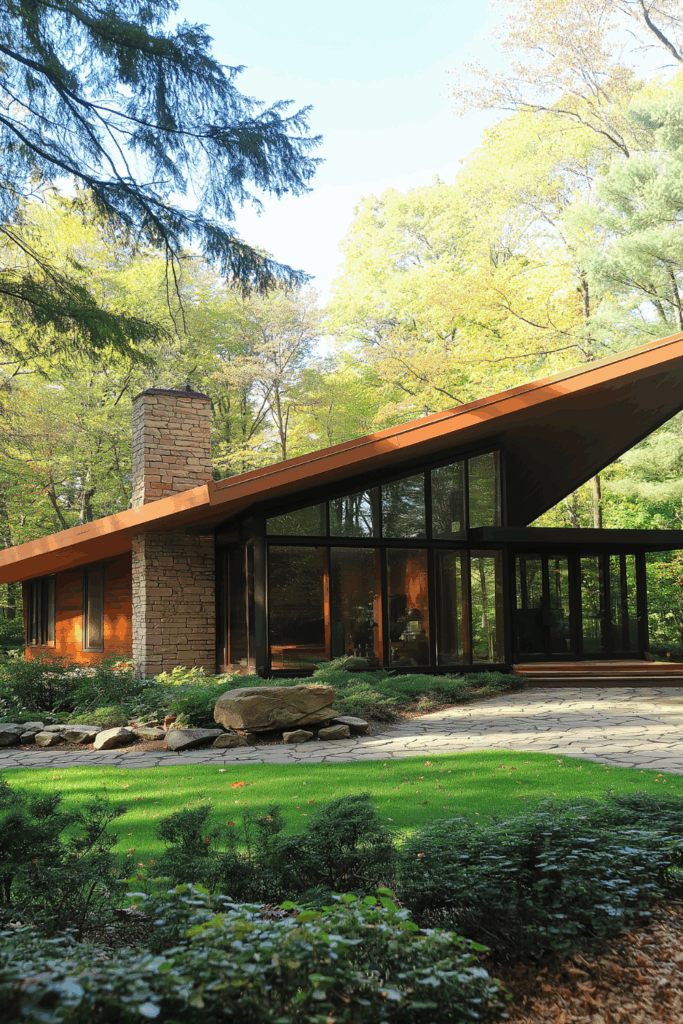
At its heart, Organic Architecture is more than a design style; it’s a philosophy. Coined and championed by visionary architect Frank Lloyd Wright, the term describes a holistic approach to architecture that seeks to create buildings in harmony with their natural surroundings. Wright believed that the structures we inhabit should feel like natural extensions of the landscape, not impositions upon it.
Rather than building on nature, he advocated for building with it. As he once said, “No house should ever be on a hill or on anything. It should be of the hill, belonging to it.” This guiding principle led Wright to design homes that echoed the forms, textures, and rhythms of their environment; blending stone with stone, light with light, and flow with function.
Key elements of Organic Architecture include:
- Natural materials like wood, stone, and glass that reflect the surrounding landscape
- Integration with the site, using the land’s contours and features as part of the design
- Unity of form and function, where the architecture serves its purpose beautifully and intuitively
Wright’s vision invites us to imagine a built environment that doesn’t dominate nature, but rather celebrates it; a lesson that continues to shape the ethos of today’s Organic Modern interiors.
Fallingwater: A Masterclass in Organic Living
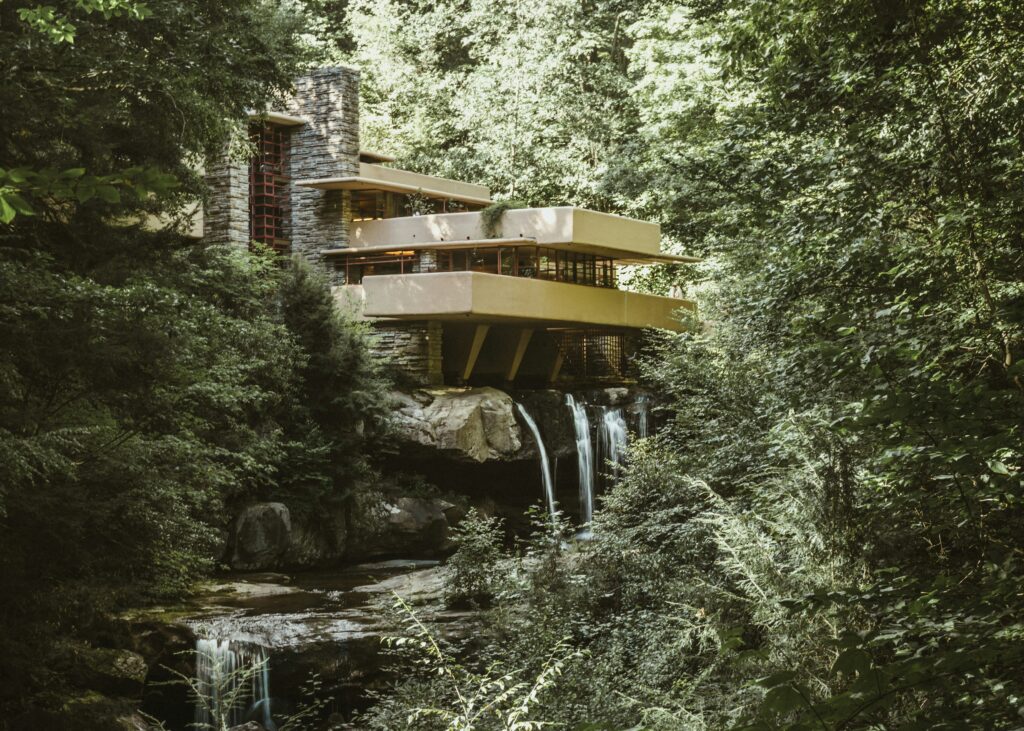
If there’s one place that captures the spirit of Organic Architecture more than any other, it’s Fallingwater. Designed by Frank Lloyd Wright in 1935 and built directly over a cascading waterfall in rural Pennsylvania, this legendary home remains one of the most breathtaking examples of living in harmony with nature.
What makes Fallingwater so powerful is not just its beauty, but its intention. Wright didn’t place the house beside the waterfall for a pretty view; he chose to build it over the water, allowing the sound and movement of the falls to become part of everyday life. Imagine waking up to the soft roar beneath your feet, or dining with windows flung open to the mist and moss. It’s not just architecture, it’s immersion.
The structure itself mirrors the natural surroundings. Wright used native sandstone for the walls, echoing the rocky outcrops of the landscape. The daring cantilevered terraces extend like ledges from the hillside, mimicking the organic flow of the rocks below. Glass walls erase the line between inside and out, flooding rooms with light and forest views.
Even the interiors are a masterclass in thoughtful design. Built-in furnishings, stone hearths, and open-plan layouts create a sense of calm and cohesion. Every element feels like it belongs, because it does. The result is a home that doesn’t compete with its environment but becomes a part of it.
For me, Fallingwater isn’t just architectural history, it’s inspiration. It’s a reminder that our homes can be both functional and poetic, grounded yet free-flowing, structured yet soulful. And that’s the very heart of Organic Modern living.
The Connection to Organic Modern Design
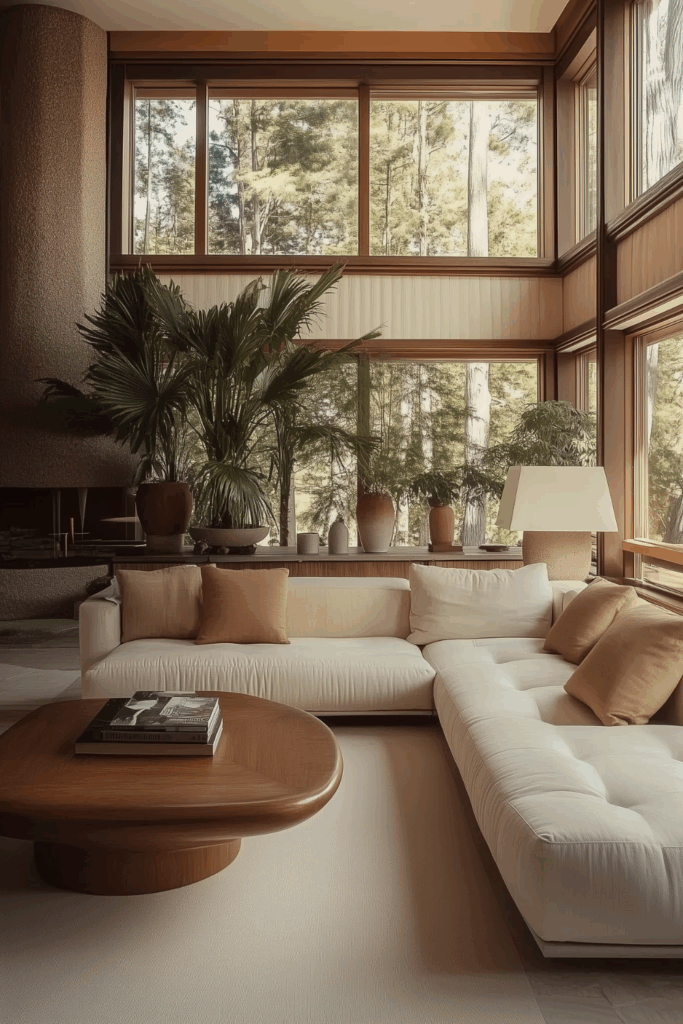
While Organic Architecture laid the foundation for blending built environments with nature, Organic Modern design brings that vision indoors, refining it for the way we live today. At their core, both styles embrace the idea that good design should feel natural, timeless, and intentional. Where Wright used stone and timber to nestle homes into the landscape, Organic Modern interiors echo that harmony through raw textures, earth tones, and an intuitive use of space.
Modern interiors inspired by Wright’s philosophy prioritize sustainability and warmth; think reclaimed wood furnishings, plaster walls, and tactile fabrics like linen, wool, and bouclé. Spaces are airy, clutter-free, and connected to the outdoors through large windows, glass doors, and organic silhouettes. Just like Wright believed no home should dominate its surroundings, Organic Modern styling avoids anything too loud or artificial. Instead, it quietly celebrates craftsmanship, balance, and simplicity.
This design ethos encourages mindful styling. A rough-hewn bench, a stone vase with foraged branches, or a sculptural lamp on a walnut console; each piece has purpose and presence, chosen to support a feeling of calm. These rooms may look minimal, but they’re rich with intention and natural character.
Together, Organic Architecture and Organic Modern remind us that our homes don’t need to be extravagant to be beautiful. When we surround ourselves with honest materials, gentle forms, and pieces that speak to nature, we create interiors that feel deeply rooted and refreshingly human.
Applying Wright’s Philosophy at Home
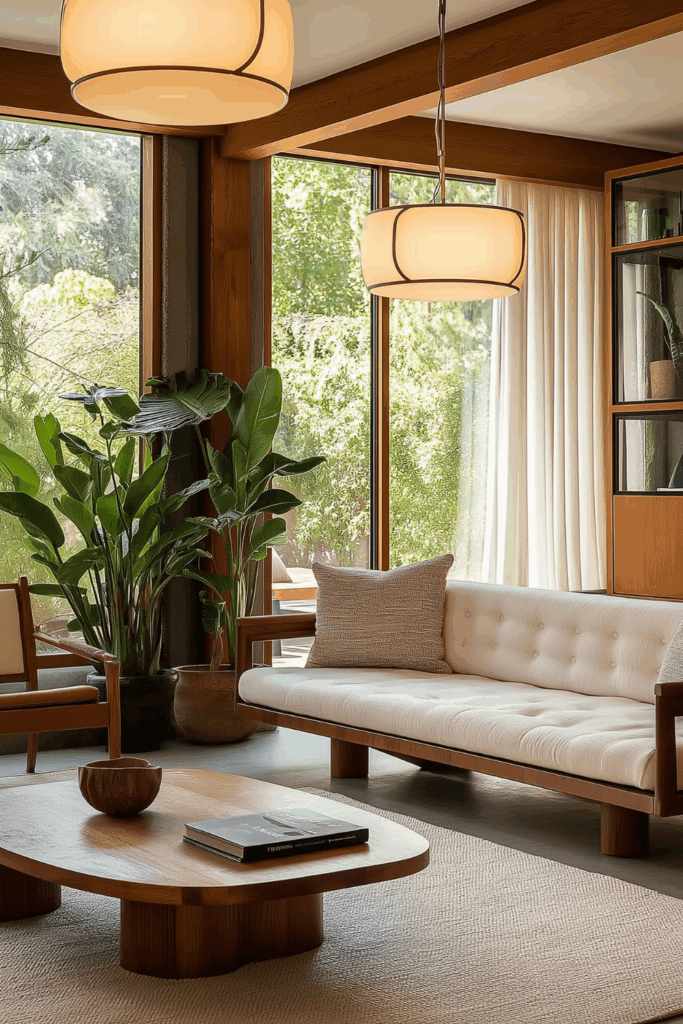
You don’t need to live in a masterpiece like Fallingwater to embrace the soul of Organic Architecture. Frank Lloyd Wright believed that good design wasn’t reserved for the elite; it was a way of living in harmony with the natural world. And today, you can channel that same intentionality into your own space.
- Start with natural materials. Bring in the textures of the earth: raw wood, hand-thrown ceramics, smooth stone, soft linen. These materials add warmth and depth without distraction. Think oak coffee tables with visible grain, clay planters with uneven edges, and woven textiles that feel grounding and honest.
- Invite the light. Wright was a master of light and flow. Open up your space by maximizing natural light; opt for sheer curtains, large windows, and mirrors that reflect the sun’s warmth. An open layout, or even simply allowing one room to breathe into another, creates the sense of calm continuity that’s key to both Organic Architecture and Organic Modern interiors.
- Blur the lines between inside and out. One of Wright’s signature beliefs was that a home should feel like part of its surroundings. You can echo that by styling indoor greenery in sculptural ways, using natural stone pots or rustic wood planters. If you’re lucky enough to have an outdoor space, open it up with large doors, earthy flooring, and textures that feel just as good outside as they do in.
- Welcome imperfection. Organic living embraces the wabi-sabi spirit, where cracks, weathering, and asymmetry are marks of life, not flaws. A salvaged beam, a chipped vase, or a handmade bowl becomes a beautiful reminder that design doesn’t need to be polished to be powerful.
Wright once said, “The longer I live, the more beautiful life becomes.” Let your home be a reflection of that beauty; evolving, intentional, and deeply connected to the natural world.
Organic Modern Rooms That Echo Wright’s Legacy
Frank Lloyd Wright didn’t just build homes; he composed spaces that lived with nature. Today, that same philosophy is alive and well in Organic Modern design, where function, serenity, and style intertwine. Let’s step into a few curated room vignettes that channel Wright’s legacy through a modern lens.
✧ The Living Room: Where Stone Meets Stillness
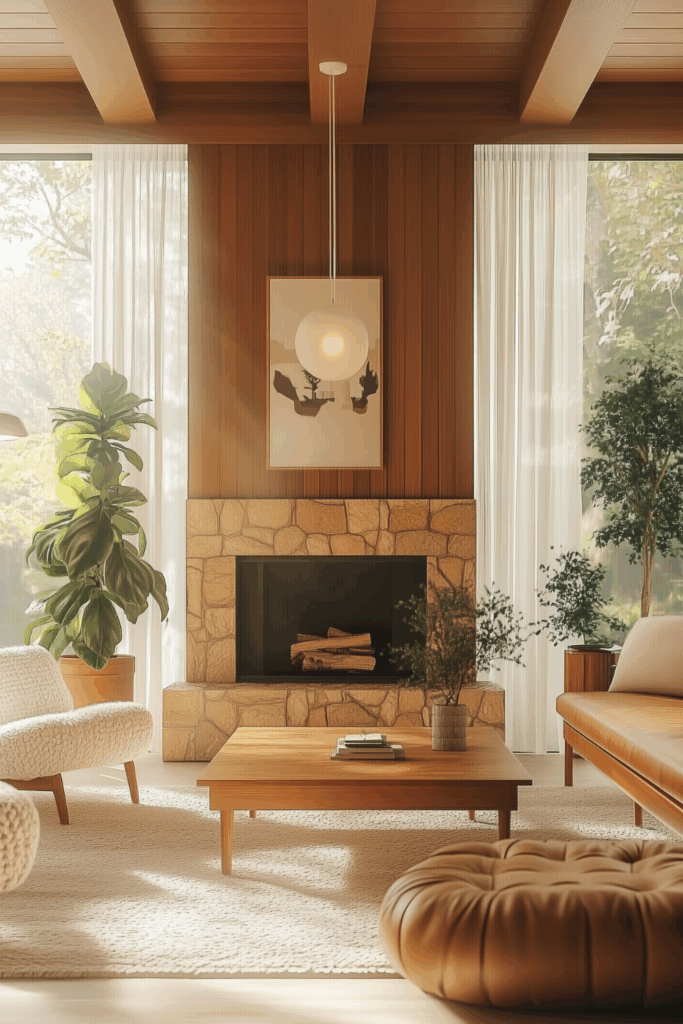
Imagine stepping into a warm, light-filled space grounded by a handcrafted stone fireplace; the kind that commands the room without overpowering it. The furnishings are low-slung and sculptural, with a neutral palette that lets the textures do the talking. Think boucle accent chairs, a raw wood coffee table, and linen drapery that dances with the breeze from wide-open windows. Potted trees and leafy greenery echo the forest just outside, creating a seamless extension of the natural world indoors.
✧ The Bedroom: A Cocoon of Earthy Calm
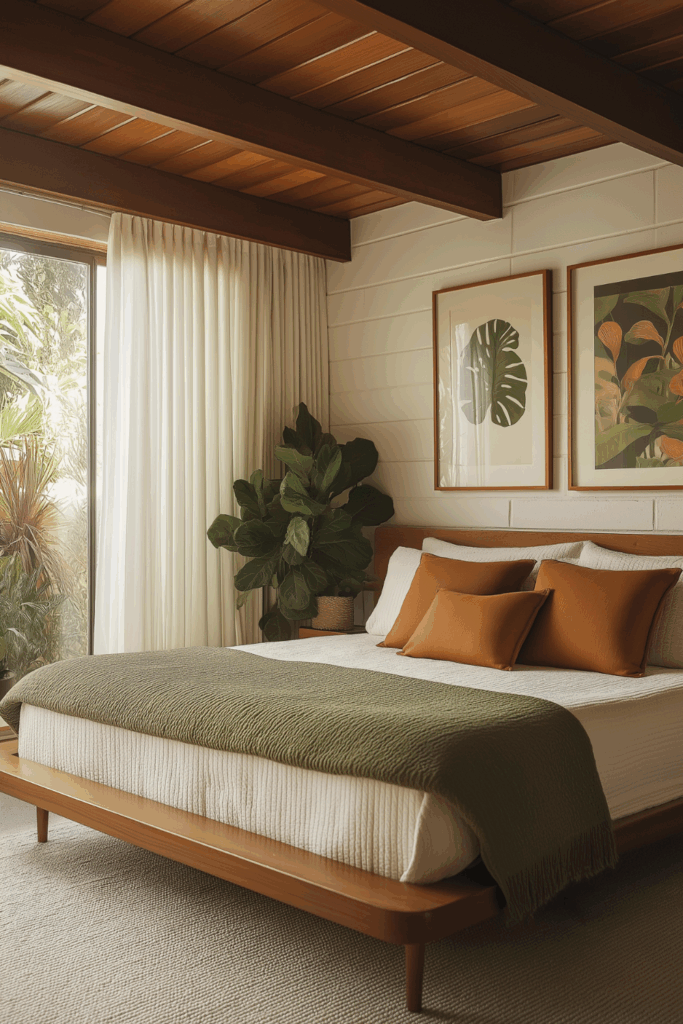
Here, simplicity reigns. Walls in clay-inspired tones envelop the room in warmth, while soft layers of flax linen and cotton pile high on a minimalist platform bed. A live-edge nightstand rests beside a glowing stone lamp, and woven baskets tuck away the clutter of daily life. It’s a quiet retreat that whispers tranquility; an intimate tribute to the Organic Modern ethos of less, but better.
✧ The Entryway: Designed for Flow
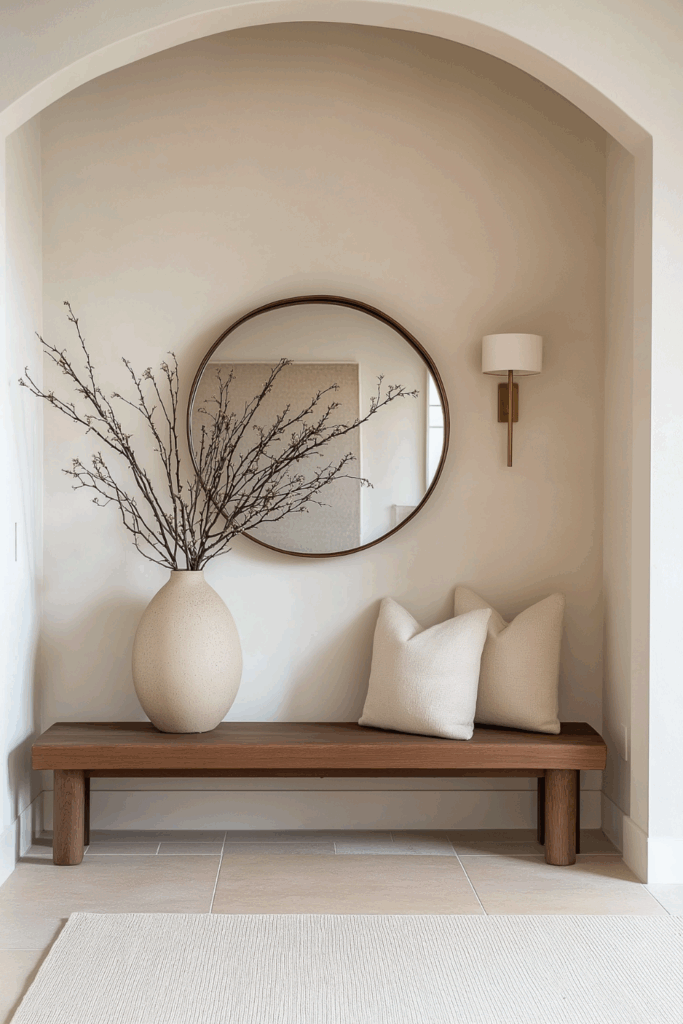
First impressions matter, and this entryway speaks volumes. Honed limestone flooring leads to a floating wood bench, with a sculptural vase of wild branches drawing the eye upward. The space breathes. Clean lines guide movement effortlessly, and thoughtful touches, such as a round mirror and a warm wall sconce, reflect the balance of nature and function. It’s not just a passageway; it’s an invitation to slow down and arrive.
Design That Breathes: The Legacy of Organic Architecture Lives On
At its heart, Organic Architecture is more than a design philosophy; it’s a quiet rebellion against chaos. It’s about living in rhythm with the earth, finding beauty in balance, and creating spaces that feel as alive and grounding as the nature outside your window. Frank Lloyd Wright didn’t just build homes; he cultivated harmony between human life and the land beneath it.
Today’s Organic Modern interiors echo his legacy. They remind us that good design isn’t loud, but intentional. That materials like wood, clay, stone, and linen can be more than decorative; they can be soul-settling. That light, openness, and flow create not just beautiful homes, but better lives.
As you style your own space, I invite you to let nature lead. Layer earthy textures, welcome the sunlight, celebrate raw edges, and imperfect finishes. Whether you live in a modern city apartment or a cozy country home, there’s always room to bring the outside in… to create a home that doesn’t just look good, but feels right.
🌿 Pin this post to revisit later,
🧡 Follow along for more Organic Modern design wisdom,
📚 And don’t forget to explore the blog for room-by-room inspiration grounded in nature’s timeless beauty.
